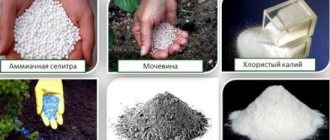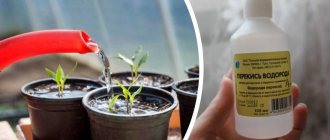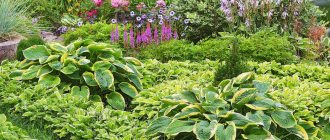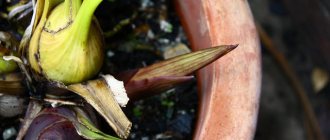Which plants should not be given shine?
Not every plant tolerates leaf polishing well. Before the procedure, make sure that such treatment will not harm your flower.
Gloss can be given only to those plants whose leaves have a smooth and shiny surface, as well as an even shape. They shouldn't have a gun on them.
You cannot polish leaves with an openwork or velvety texture, pubescence, or spines. Plants with delicate and sensitive foliage should also not be subjected to this procedure.
Only adult leaves are allowed to be polished. The procedure is contraindicated for young foliage, as it can be easily damaged. You should rub only the upper part of the leaf plate, it is better not to touch the lower part.
Cleaning indoor plants from dust and dirt
Maintaining hygiene for indoor plants is one of the main conditions for their health and attractive appearance. Dust and dirt not only spoil the pleasure of contemplating green pets, but also disrupt metabolic processes and create an ideal environment for the spread of pests. You need to clean plants from dust not from time to time, but regularly. If we are talking about decorative deciduous crops, then this task is not at all easy. After all, even in the matter of plant hygiene, an individual approach to them is needed.
Cleaning the leaves of indoor plants from dust and dirt. © Westend61
Decorative foliage plants are indispensable both for interior decoration and for creating a healthy living environment. Being excellent filters that cope with toxins, harmful substances and allergens, they improve the health of the air and help create a comfortable living environment. But in order for plants to fully perform their function as a living filter, they must be in a clean state. After all, plant leaves attract dust, soot and dirt, which clog the stomata and prevent their normal respiration. Hygiene is important both for the process of photosynthesis - the main life process of plants - and for preventing the spread of pests or diseases. So the issue of maintaining cleanliness is by no means just an aesthetic one. But especially in decorative deciduous crops, maintaining hygiene is far from easy.
Attractive leaves usually mean they have a leaf edge or a special structure or surface texture. Only a few decorative foliage stars have glossy leaves. And living velvet or velor, felt or satin on them automatically means that the leaves of these plants do not like contact. Along with the inability to increase air humidity by spraying, these plants do not tolerate inaccurate watering, drops of water falling on the leaves, not to mention watering. The ban also applies to cleaning such leaves: where on smooth leathery leaves you can get by with a very simple procedure of wiping with a damp sponge, on pubescent plants you will have to use other methods.
First of all, when studying the individual characteristics of a plant, it is worth checking whether it tolerates contact with the surface of leaves, spraying and showering, and whether there are recommended methods for maintaining hygiene. If there is no such information, you should rely on the instructions for spraying: crops for which they are prohibited do not like wiping or washing the leaves.
General rules for cleaning indoor plants:
- Dust removal must be carried out regularly. Dust accumulates on leaves even in rooms where special collection devices are installed. Depending on the intensity with which dust is collected, a mandatory cleaning procedure must be established and carried out regularly. It is best to observe the plant, but the standard frequency of hygiene procedures is once a week or a little less often.
- Rubbing is necessary not only on the outer, “top” side of the leaves, but also on the back side. Despite the fact that dust and dirt are usually visible on one side of the sheet, thorough cleaning must be carried out on both sides.
- In addition to regular procedures, schedule periodic “spring cleaning” into your schedule—showering or washing for plants that can handle it, and a similar thorough cleaning for crops that can’t stand getting wet. They are combined with cleaning the top of the substrate from contaminants and cleaning the trays and outer parts of the containers in which green pets grow. Such procedures are also carried out urgently if it is noticeable that the plant is heavily contaminated, so much dust accumulates that the functioning of the respiratory stomata is disrupted and growth retardation is observed.
- Do not wait until a thick layer of dust and dirt appears on the leaves. As soon as you see that dust becomes noticeable on the leaves, not only from a very close distance, take action immediately. The less the plant is contaminated, the better.
- With any type of wet cleaning on plants, they need to be protected not only from direct sunlight, but also from cold environments, air currents, and drafts. Drying of the leaves is carried out in a warm place with diffused semi-shaded lighting.
Spraying the leaves of indoor plants. © bluecinema
The simplest option is a smooth surface
For crops that like to be sprayed and have smooth leaf surfaces, the cleaning process is much simpler than for crops whose leaves are afraid of any contact with water. But even among this category of decorative leafy indoor plants there is a division: large-leaved plants are very easy to clean, but small-leaved plants are too troublesome to wipe by hand.
If the plant has large leaves that are not afraid of contact, then cleaning and washing is a very simple task:
- The leaves are wiped with a soft cloth or sponge, choosing napkins or pieces of fabric so that they do not leave lint and do not injure the surface of the leaf.
- It is enough to moisten the selected fabric or sponge in warm water, squeeze it thoroughly (too much wetting will lead to streaks appearing on the leaves; instead of removing dust, you will just “wash” it over the leaves).
- Using a sponge or cloth, carefully holding the sheet with your hand, carefully remove dirt with quick movements. You need to move from the petiole to the tip of the leaf blade. It is not advisable to vigorously rub the leaves even on stubborn stains of dirt: the procedure is carried out without damaging the protective layer on the leaves and without putting pressure on the surface.
- Young, growing, unfolding leaves are not wiped or cleaned, since their development process can be disrupted by indelicate intervention.
Cleaning leaves
Clean the leaves before polishing. Use a soft, damp sponge or cloth to remove dirt and dust.
To keep less dirt from accumulating on your plants, periodically rinse them with warm water from a shower with a fine spray nozzle. Cover the soil in the pot with film so that it does not get wet and does not absorb too much moisture.
Delicious oatmeal and honey pie: a great dessert recipe without sugar and flour
The young wife of Valery Syutkin: what does she do
Preparing homemade puree: what young mothers waste time and energy on
Once the leaves are clean, they can be polished. Next we will look at different tools that can be used for this purpose.
Milk
Milk is also used to add shine - you need to make a mixture by combining the drink in equal parts with water. After this, the resulting liquid is applied to a sponge and the leaves are wiped with it. The shine is not strong, but noticeable.
The solution may leave a film on some plates, as is the case with olive oil. Therefore, it is recommended to increase the amount of water, and, on the contrary, reduce the volume of milk. Then you will get a lighter product that will be safe for the flower.
If a solution with a lower concentration of milk is used, the shine will also be reduced. However, it can be neglected so that the development of pets does not stop for the sake of aesthetic appeal alone.
Store products
There are polishes and sprays for plants on sale. They quickly add shine to the foliage and are beneficial for flowers. These products are used according to the instructions. Usually they are applied to a cloth and wiped from the top side of each sheet.
But these drugs have significant drawbacks. They are toxic to humans and have a pungent odor. You can work with them only in a ventilated area, wearing a mask and goggles. Therefore, many gardeners prefer to use home remedies, which we will discuss below.
How to add shine to the leaves of indoor plants
Both decorative foliage plants and flowering indoor plants look attractive when their leaves are kept clean.
The beautiful glossy shine of healthy leaves indicates both the condition of the plants and the quality of their care. Mandatory procedures for growing indoor crops today often include not only watering, fertilizing, timely replanting and pruning, but also cleaning and polishing the leaves. The latter is designed to give the greenery an attractive shine and perfect appearance. But not every indoor plant needs polishing, and it must be done carefully and following strict rules.
Houseplant treated with leaf polish. © Rhonda Brady
Why do you need “leaf shine”?
Beautiful, shiny leaves today are considered a kind of standard for a well-groomed and healthy plant. And a variety of “magic” products that give foliage a special shine today literally flood the shelves. Advertising recommends them for almost all indoor plants without exception. And at the same time, few people think about the fact that polishing is not necessary for all indoor crops, and for some it can even become a disastrous factor. After all, wax, oil, or polishes with an even more complex composition are, although fashionable, preparations that do not replace good care. And you shouldn’t expect that after spraying a plant with a spray, it will look radically different.
Which plants can be “given shine”?
Among indoor plants there are many species that do not need any cleaning of the leaves and are afraid of any careless contact. Flowering or decorative deciduous crops, whose leaves are not naturally shiny, but are pubescent, velvety, sensitive, openwork, as well as all types of thorny plants, Selaginella, ferns and cacti, do not need polishing in principle.
“Glossing” is possible only for those indoor crops whose leaf surface is smooth, even, shiny, and devoid of the slightest edge. Polishing is suitable for croton, crassula, dieffenbachia, all types of ficus, ivies, palms, philodendrons, monstera, aspidistra, nematanthus and many other flowering and deciduous beauties. But it is absolutely not needed, for example, by Saintpaulias, pelargoniums or begonias.
All means by which you can add additional shine to leaves are divided into two categories:
- Industrial polishes or glosses.
- Homemade polishes.
Industrial preparations for adding shine to leaves
Special purchased liquid or aerosol-type products, called polishes or shine products, are usually not designed for gloss. These are complex preparations with a wide spectrum of action, which have been tested and are the final touch in caring for indoor plants.
Almost every manufacturer of products intended for indoor plants has its own polish. They are sold in the form of an aerosol, a simple spray or a liquid. Such preparations give plants a special shine and a healthy appearance for a long time. And the difference in the appearance of foliage after treatment with a spray or liquid polish is really very strong. The bright gloss and feeling of impeccable condition are very attractive. But behind the visible “shine” lies the most important aspect of their impact: such products, regardless of their form, primarily perform the function of protecting plants from pests and diseases by creating an additional film, or barrier, on the surface of the leaves.
Treating a houseplant with leaf polish. © Rhonda Brady
Liquid and aerosol polishes differ significantly in their effects. Liquid products are used only for plants with large, leathery leaves, such as monstera or rubber ficus, which can then be wiped by hand. Aerosols and sprays are intended for all crops, including those for which manual processing is undesirable - plants with small, delicate, carved or very thick leaves that cannot be rubbed by hand.
Preparations for adding shine to leaves should be used strictly following the manufacturer's instructions, adhering to the methods and methods of application recommended for each specific composition. Be especially strict about the frequency of treatments: if used too often, polishes form an air- and water-proof layer on the leaves, which harms the plants even more than a thick layer of dust. They can be used only in minimal quantities, as rarely as possible, only when it is really necessary to maintain an attractive appearance and protect the plants. In order to avoid mistakes when using such ready-made products to improve the appearance, you should always test on one or more leaves, and then observe for 2-3 days how the plant feels after chemical polishing.
Miracle remedies also have their own precautions:
- Polishes can only be used for plants that are kept in diffused light or shaded lighting. If exposed to direct sunlight, it can cause chemical burns.
- Such preparations cannot be applied to the underside of leaves, shoots, and especially flowers (causes serious developmental disorders, shedding of greenery and serious problems with the health of crops), and also cannot be used for plants that require systemic spraying.
- Before applying the product, you need to clean the leaves from dust and dirt in any convenient way and let the greenery dry.
Cleaning leaves from dust and dirt. © Rhonda Brady Cleaning leaves from dust and dirt. © Rhonda Brady Houseplant leaves treated with leaf glitter. © Rhonda Brady
Banana peel
Peel the banana. Remove any coarse fibers from the inside. Then mash the banana skin well in your hand.
Rub each leaf of the plant with the inside of the skin. If there are any particles of skin left on the sheet plate, remove them with a soft cloth. This procedure not only improves the appearance of the plant, but also feeds the flower with potassium.
Rules for cleaning crops
How often this procedure is necessary will depend on where the flower is located and where you live. If a crop is placed on a frequently opened window, it will become contaminated faster than a crop placed in the back of the room. The locality you live in will also play a role: if it’s a city, then you need to “clean” your pets often.
Monitor the condition of the flower! If you see dust on the plant or water stains, do not waste time. In your free time, start caring for your home crops! No supernatural efforts required!
Related article:
Watering regime when caring for gloxinia at home
Rubbing the leaves of ficus rubber. Illustrations for the article are used under the standard license ©ofazende.ru
Nonalcoholic beer
For this procedure, you can only use non-alcoholic beer. Take 1 part drink and 2 parts water. Mix liquids. Wipe the leaves with the prepared mixture and they will shine.
What natural sounds should you listen to to lift your mood and relieve stress?
How to make a bright vertical flower bed for a summer cottage: master class
The prototype of the European constitution appeared in Rome: where did the common people go?
How to wipe ficus leaves to make them shine?
The easiest way to care for a ficus is to wipe the leaves with a slightly dampened sponge, rag, piece of gauze or velvet, you can even use a soft brush dipped in water. If after such a procedure the leaves remain dull, it means that the problem is not a dusty coating, the problem is inside the body: the ficus wants “feeding”, and it is worth buying fertilizers.
You can look for a special spray for ficus plants in flower shops. After washing, the leaves are sprayed with this product. But there is a big disadvantage: wax is added to the spray, so the leaves will be shiny, but the flower will not breathe. It is not easy to wash off such wax.
To disinfect the plant, you need to add something acidic to the water for wiping the leaves: vinegar (1 tablespoon per 0.5 liter of water), lemon juice or citric acid.
On the forums they say: wipe ficus leaves to make them shine with mayonnaise (dissolve in water, rub, wash off after a couple of days) or milk, which makes the plant grow faster. Using milk or whey (add to water in a 1:1 ratio), gardeners not only achieve the shine of ficus leaves, but also get rid of the white coating on the leaves.
There are people who like to add alcohol, sugar, beer to water for shine, and charcoal to soften the water. Ficus leaves will acquire a beautiful green color if they are wiped with a cloth soaked in black beer.
Of course, wiping every leaf is not a quick task and requires patience. You can speed up this procedure by spraying the leaves with water from a spray bottle with the addition of the above ingredients.
What products should not be used
Plants should not be wiped with liquids containing alcohol, such as rubbing alcohol or high-proof beer. These products dry out and damage the leaves, which leads to spots.
Beeswax is also not a suitable polishing agent. It gives an uneven shine and collects in pellets. In addition, the wax clogs the stomata of the leaves and prevents the plant from breathing.
Glycerin gives the leaves an excellent shine. But it is not advisable to use this remedy. It contains fats that prevent oxygen from entering the plant.
"Secret ingredient" - natural polish
This recommendation will make your flowers much more attractive. You can use it for spathiphyllum or dieffenbachia. After washing the plants, you need to rub the foliage with beer or milk. The result will be a stunning shine for your flower!
Related article:
8 moody houseplants
Spathiphyllum leaves are very beautiful! Even without flowers
Leaf hygiene
The impeccable appearance of a plant indicates, first of all, that it is healthy. But sometimes even a healthy plant looks untidy, and the reason for this may be dust settled on the leaves.
Any housewife knows how quickly dust accumulates in a room, so regular cleaning is a routine but necessary procedure. Dust settled on the leaves of plants, when water gets on them, turns into dirt, which must also be removed regularly: dust and dirt interfere with the process of photosynthesis and evaporation of moisture, attract pests and create favorable conditions for the development of diseases .
Procedure for cleaning leaves:
- wipe the leaf plates once or twice a week with a soft material - a damp cloth or sponge;
- You need to remove dust from both the top and bottom sides of the leaves;
- Carry out the procedure in the morning or afternoon so that the leaves have time to dry by evening;
- very dusty or dirty leaves can be washed with soapy water, which should then be rinsed off with clean water. If you use alkali to wash the leaves, cover the substrate with film.
Leaves covered with fluff or lint are not washed, but are cleaned of dust with a brush with soft, thick bristles.
Decorative foliage indoor plants: leaf care
Author: Tamara Altova. December 05, 2022 Category: Houseplants.
Plants such as saintpaulias, gloxinias, azaleas and other beautifully flowering crops attract attention with their charming flowers, but the flowering of ficus, monstera, shefflera and other decorative foliage plants is far from so attractive, so we grow them exclusively for the leaves that require special care. Although in fairness it must be said that well-groomed leaves of flowering plants make them attractive not only during flowering. In this article, we will tell you how to care for the leaves of indoor plants so that they are always in the best shape.
Other tips
Since we are talking about how to properly care for indoor plants, other aspects should be mentioned. It is very important, for example, to remove “diseased” parts (tear off leaves, cut off stems).
If your plant has wilted flowers or yellowed leaves, it is better to remove them in a timely manner. Then the plant will be able to direct all its forces to the preservation and development of healthy shoots.
In addition, the characteristics of each plant should be taken into account. After all, they require different care. There are some that “don’t like” being wet: for example, cacti and succulents. They need dry cleaning.
Cleaning the leaves of houseplants is actually not that difficult. It takes only a few minutes. But the plants will feel good and pleasant. And if you have flowers at home, let them be a real interior decoration! Healthy and juicy greens will please the eye and will definitely lift your spirits!











